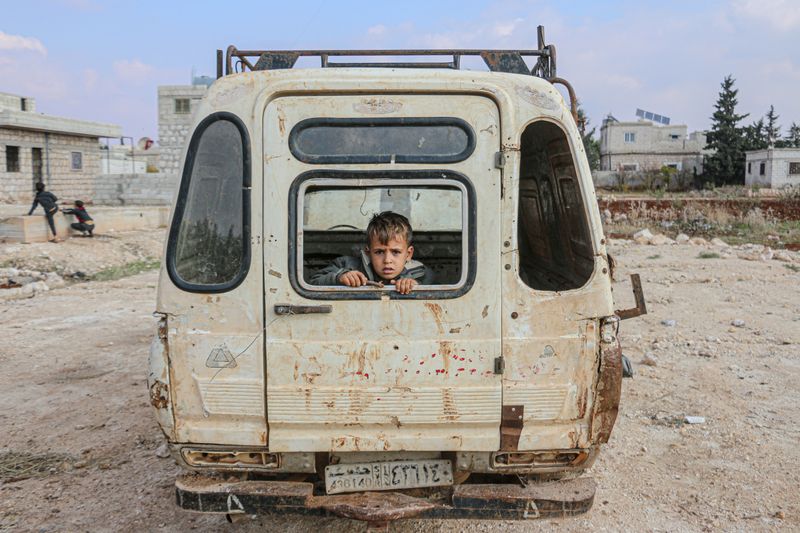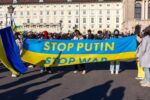Israel and Gaza: A Steady Descent into Genocidal Violence
LATEST DEVELOPMENTS
In a tragic escalation of violence, Israel has launched a devastating aerial assault on Gaza in response to a surprise attack by Hamas militants. The death toll on both sides continues to rise, with Israel reporting 1,200 killed and over 2,700 wounded, and Gaza reporting 1,055 killed and 5,184 wounded. The situation remains volatile, as Hamas’ armed wing, the Al Qassam Brigades, claims to still be fighting inside Israel, while Israeli tanks and armored vehicles gather just north of Gaza. The conflict shows no signs of abating, with both sides vowing to continue fighting until their objectives are achieved.
BLATANT DEHUMANIZATION AND GENOCIDAL TACTICS
The level of violence and destruction witnessed in the current conflict is deeply disturbing. Israel‘s bombardment of Gaza and Hamas’ indiscriminate attacks have caused immense suffering, leaving a trail of death, devastation, and displacement. The disregard for civilian lives is alarming, as countless women, children, and innocent civilians are caught in the crossfire. Palestinian U.N. envoy Riyad Mansour aptly described these actions as “blatant dehumanization” and “genocidal.” The international community must not turn a blind eye to such grave human rights violations.
A QUESTION OF ETHICS
The Israeli-Palestinian conflict has been a longstanding and deeply complex issue, rooted in historical, geopolitical, and religious factors. It is necessary to take a step back and examine the ethical implications of the current situation. The loss of human life, the displacement of communities, and the destruction of infrastructure demand urgent ethical reflection. How can we justify the continued use of violence as a means to achieve political goals? And what is the responsibility of both Israel and Hamas in ensuring the protection and well-being of their respective populations?
THE ROLE OF THE INTERNATIONAL COMMUNITY
It is crucial for the international community to play an active role in addressing the Israeli-Palestinian conflict. The United Nations, as the global body responsible for maintaining peace and security, must take immediate action to intervene and broker a peaceful resolution. The situation demands urgent diplomatic efforts, aimed at de-escalating tensions and promoting dialogue between all parties involved. Moreover, the international community needs to provide humanitarian assistance to the affected populations in both Israel and Gaza, ensuring that basic necessities such as food, water, and medical aid are accessible to all.
THE NEED FOR COMPROMISE AND DIALOGUE
The Israeli-Palestinian conflict has proven time and again that military solutions are not sustainable. The cycle of violence perpetuated by retaliatory strikes only leads to more death and destruction. A lasting resolution can only be achieved through a genuine commitment to dialogue, compromise, and peaceful negotiations. Both Israel and Hamas must recognize the need for mutual understanding and find common ground to address the legitimate grievances and aspirations of their respective peoples.
RISKING HUMAN LIVES WITH A GROUND OFFENSIVE
While Israel has indicated its intentions to launch a potential ground assault against Hamas, such a move carries significant risks. The narrow, densely populated Gaza Strip presents a precarious situation, with the lives of hostages held by Hamas at stake. The international community should urge Israel to exercise utmost caution and prioritize the protection of civilian lives, ensuring that any military action is proportionate and abides by international humanitarian law.
THE WAY FORWARD
It is imperative that the international community, led by the United Nations, takes immediate and decisive action to bring about an end to the violence in Israel and Gaza. Dialogue must be facilitated, and negotiations should focus on finding a comprehensive and sustainable solution based on the principles of justice, equality, and respect for human rights. The continued suffering of innocent civilians on both sides demands nothing less than a concerted effort to achieve lasting peace in the region.
CONCLUSION
The current conflict between Israel and Gaza represents a steady descent into genocidal violence. The loss of human life, the destruction of infrastructure, and the displacement of communities demand urgent attention and action from the international community. This is not just a political or military issue; it is a moral imperative to uphold the principles of humanity, compassion, and justice. The time for meaningful dialogue and lasting peace is now.

<< photo by Ahmed akacha >>
The image is for illustrative purposes only and does not depict the actual situation.
You might want to read !
- Transatlantic Diplomacy: Navigating the U.S.-Israel Relationship under President Biden
- “Shuffling the Deck: Volkanovski Replaces Oliveira for Epic Clash with Islam”
- The Race for California’s Senate Seat Heats Up as Steve Garvey Steps In
- Introducing the Sleek and Sophisticated Redesign of the PS5: A Holiday Treat
- A Deep Dive into the Disturbing Ideologies of Christopher Columbus: An Analysis of an ‘Unhinged’ Letter
- The Urgency of Prioritizing Mental Health: HE&R Celebrates World Mental Health Day 2023
- Kibbutz Under Attack: A Harrowing Account from Israel’s Frontline
- “Hamas’ Devastation Unveiled: Aerial Footage Exposes Extent of Israel Music Festival Destruction”
- Democrats Divided: Criticism Mounts Against Tlaib and Bush’s Call for Ending Security Funding
- Surviving the Horror: Eyewitness Accounts of the Hamas Attack on a Kibbutz House
- Was Iran Behind the Recent Hamas Attack?
- Breaking News: Jerry Seinfeld Hints at Exciting ‘Seinfeld’ Reunion Project
- “Azerbaijan Takes Advantage of Russian Distraction to Launch Attack”
- Europe at a Crossroads: Germany’s 4-1 Loss to Japan Exacerbates Euro Crisis
- “How Domino’s is Serving up Generosity with Free ‘Emergency Pizza’”
- Examining the Toll: Tlaib’s Reflection on Lives Lost in Israeli-Hamas Conflict
- Exploring the Impact: Palestinian Militants’ Multi-Front Attack on Israel
- In Focus: Tlaib’s Grief for Lives Lost in Israeli-Palestinian Conflict




